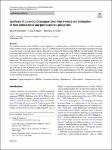Thông tin tài liệu
Thông tin siêu dữ liệu biểu ghi
| Trường DC | Giá trị | Ngôn ngữ |
|---|---|---|
| dc.contributor.author | Abdelbasir, Sabah M. | - |
| dc.contributor.author | Rayan, Diaa A. | - |
| dc.contributor.author | Ismail, Mahmoud M. | - |
| dc.date.accessioned | 2023-08-14T03:05:55Z | - |
| dc.date.available | 2023-08-14T03:05:55Z | - |
| dc.date.issued | 2023 | - |
| dc.identifier.uri | https://link.springer.com/article/10.1007/s11356-023-28437-5 | - |
| dc.identifier.uri | https://dlib.phenikaa-uni.edu.vn/handle/PNK/8790 | - |
| dc.description | CC-BY | vi |
| dc.description.abstract | Waste printed circuit boards (WPCBs) contain a plethora of valuable metals, considered an attractive secondary resource. In the current research, a hydrometallurgical process combined ammonia/ammonium chloride leaching and reduction (using L-ascorbic acid) to recover copper and its oxide (CuO) as nanosized particles from WPCBs was investigated. The results of leaching indicated that 96.7% of copper could be recovered at a temperature of 35 °C for a leaching duration of 2 h with ammonium chloride and ammonia concentration of 2 mol/L at a solid:liquid ratio of 1:10 g/cm3. The synthesized particles exhibit spherical and distorted sphere morphology with average particle size of 460 nm and 50 nm for Cu and CuO NPs, respectively. The antibacterial activity of Cu, CuO, and a (1:1) blend of both (Cu/CuO) has been examined against five different bacterial and fungal strains. | vi |
| dc.language.iso | en | vi |
| dc.publisher | Springer | vi |
| dc.subject | WPCBs | vi |
| dc.subject | using L-ascorbic acid | vi |
| dc.title | Synthesis of Cu and CuO nanoparticles from e-waste and evaluation of their antibacterial and photocatalytic properties | vi |
| dc.type | Book | vi |
| Bộ sưu tập | ||
| OER - Khoa học môi trường | ||
Danh sách tệp tin đính kèm:

